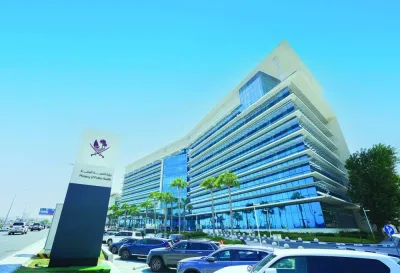Boeing’s 737 MAX plane is safe to return to service in Europe, the European Union Aviation Safety Agency (EASA) said this week.
It follows an almost two-year flight ban for the jet, which followed two crashes involving the tragic loss of 346 lives.
EASA gave its seal of approval for the return to service of a modified version of the Boeing 737 MAX, mandating a package of software upgrades, electrical working rework, maintenance checks, operations manual updates and crew training which will allow the plane to fly safely in European skies after almost two years on the ground.
“We have reached a significant milestone on a long road,” said EASA executive director Patrick Ky. “Following extensive analysis by EASA, we have determined that the 737 MAX can safely return to service. This assessment was carried out in full independence of Boeing or the Federal Aviation Administration and without any economic or political pressure – we asked difficult questions until we got answers and pushed for solutions which satisfied our exacting safety requirements. We carried out our own flight tests and simulator sessions and did not rely on others to do this for us.
“Let me be quite clear that this journey does not end here,” he added. “We have every confidence that the aircraft is safe, which is the precondition for giving our approval. But we will continue to monitor 737 MAX operations closely as the aircraft resumes service. In parallel, and at our insistence, Boeing has also committed to work to enhance the aircraft still further in the medium term, in order to reach an even higher level of safety.”
The Boeing 737 MAX was grounded worldwide in March 2019 following the second of two accidents within less than six months, and the root cause of these tragic accidents was traced to software known as the MCAS (Maneuvering Characteristics Augmentation System), intended to make the plane easier to handle. However, the MCAS, guided by only one Angle of Attack (AoA) sensor, kicked in repeatedly if that sensor malfunctioned, pushing the nose of the aircraft downward multiple times. In both accidents, pilots finally lost control of their plane, resulting in a crash with total loss of aircraft.
The Airworthiness Directive, which details the aircraft and operational suitability changes, including crew training requirements, must be carried out before each individual plane returns to service, gives the green light from the EASA side for a return to service of the aircraft.
The 737 MAX’s first accident occurred in October 2018, when a Lion Air jet came down in the sea off Indonesia.
The second involved an Ethiopian Airlines version that crashed shortly after take-off from Addis Ababa, just four months later.
Both have been attributed to the flawed flight control software, which became active at the wrong time and prompted the aircraft to go into a catastrophic dive.
Europe’s certification comes days after a report by Ed Pierson, former Boeing manager, which claims that regulators and investigators have largely ignored factors, which he believes, may have played a direct role in the accidents.
He said that further investigation of electrical issues and production quality problems at the 737 factory is badly needed.
Some European member states issued their own decision prohibiting the operation of the 737 MAX last year for their sovereign airspace. These bans will need to be lifted before the aircraft can fly again in the airspace of these countries. EASA say they are working closely with the relevant national authorities to achieve this.
Following the exit of the United Kingdom from the European Union, the UK Civil Aviation Authority is now responsible for clearing the aircraft to operate to/from and within the U.K as well as for UK operators.
There are also uncertainties about the future of the 737 MAX in the key aviation market of China, where aircraft demand surged prior to this year’s coronavirus pandemic. China has participated in some of the MAX reviews but hasn’t been involved in the flight testing that includes regulators from Canada and Brazil along with the FAA and EASA, Ky said. “I honestly don’t know where they are” with their evaluation, he said.
Boeing has already agreed to pay $2.5bn (£1.8bn) to settle US criminal charges that it hid information from safety officials about the design of the planes.
The US Justice Department said the firm chose “profit over candour”, impeding oversight of the planes.
About $500m of that will go to families of the people killed in the tragedies.
However, attorneys for the victims of the Ethiopian Airlines crash have said the deal would not end their pending civil lawsuit against Boeing.
On Wednesday, Boeing posted a record $12bn annual loss after it delayed its all-new 777X jet for the third time, incurring huge charges.
The coronavirus crisis has caused demand for the industry’s largest jetliners to fall, with airline customers shunning deliveries of planes due international travel restrictions.
*The author is an aviation analyst. Twitter handle: @AlexInAir

Alex Macheras


